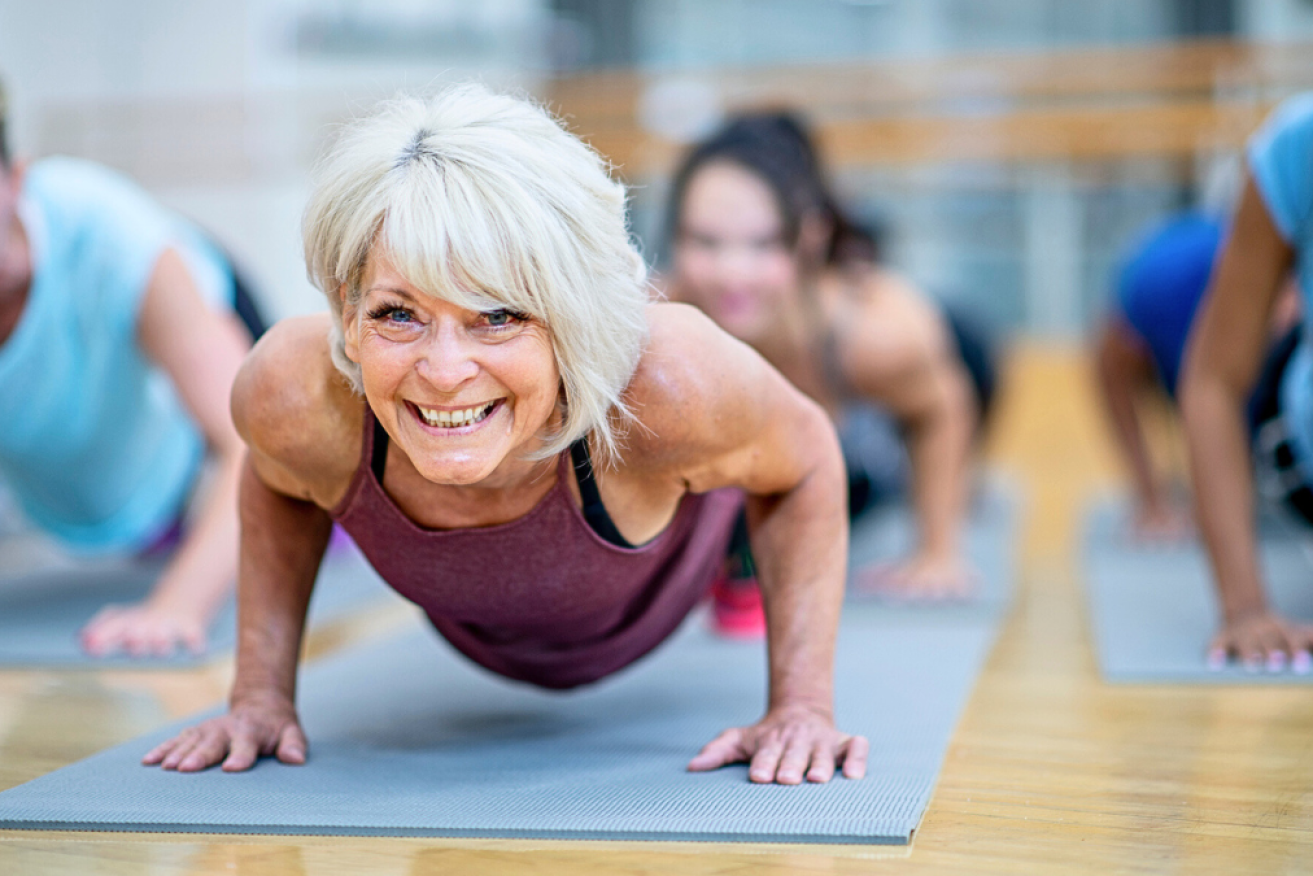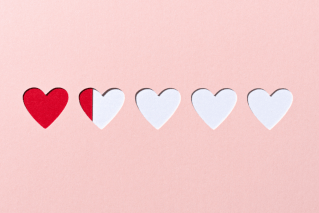Easy does it: Ten essential exercises for over-50s

Staying strong in your 50s is important for mobility, agility and balance. Photo: Getty
Keeping active becomes increasingly important as we age – not only to stay fit and healthy, but to be happy and thrive.
An inactive lifestyle can lead to loss of bone density and loss of muscle mass, with research showing the proportion of people who are not physically active generally increases with age.
Australian Institute of Health and Welfare data shows among 18 to 24 year olds, 29 per cent of men and 30 per cent of women are insufficiently active. This jumps to 47 per cent of men and 53 per cent of women in the 65-plus age bracket.
Here, we asked two experienced health experts to recommend 10 critical exercises over-65s should practice regularly.
Lumbar rotations
Lie on your back, feet flat, knees bent and roll your knees to one side and then the other to see if you can bring the knees together to the floor.
“The trick is the more bent your knees are, the lower the stretch is on your back – the straighter out your legs are, the higher the stretch is into your back muscles,” said Melanie McAuliffe, physiotherapist, sports science and pain expert.
“If it hurts sometimes, just changing the angle of bend at your knees and hips can relieve your stretch. Having your feet in contact with the bed takes the load off the back.”

Physiotherapist Melanie McAuliffe.
Round the clock
“As we get older we’re not like children and teenagers who can balance easily – our balance tends to go, so you need to practice,” said Graham Elliss, personal trainer and owner of Renewed After 50.
“It’s an exercise area you can develop quickly and it’s easier than building new muscle and so important because when we get to 80, one in two of us will fall and of those who break their hip, only 20 per cent will survive the next 12 months.”
Balance on your left leg, keeping your left foot flat. Lift the right knee and point your right foot to the floor in front of you – this is your starting position.
Lift the knee, engage your core and rotate your body slightly so you can lower the foot to the one o’clock position. Continue all the way around, touching each point around you to correspond to a clock.
When finished, swap legs and repeat anti-clockwise.
Clams
Lie on one side with knees bent, feet touching each other and heels in line with your bottom. Open and close the top leg, taking it as high as you can, but with your feet still touching each other.
“Do as many as you can before your start losing height or your legs start shaking initially,” said McAuliffe.
“You can build up to more or do complex variations after you can achieve two or three sets of around 15 reps.”
Lunges
“Either forward or reverse lunges help make sure our base of support is as strong as it can be,” Elliss said.
Stand with both feet facing forward. Step your right foot forward and gently lower your left knee, so that you are on the ball of your left foot. Keep your chest straight and use something stable to lean on for support if needed.
Push up through both knees, keep right foot ahead of you, and repeat the lunge. Switch legs so you are stepping your left leg forward and lowering your right knee.
Reverse lunges
Start at a neutral position with both feet facing forward and step back. Lunge into the position, as described above, being careful not to slam your knee into the floor. Switch legs.
Lunges can be done with or without holding dumbbells.
Goblet squat
Built lower body strength with goblet squats, which can be done with or without holding weights. Stand with feet slightly wider than hip-distance apart and toes angled a little outwards. With your hands, or a weight, held at chest-height, engage your core, press your hips back and bend your knees to squat.
Press through your heels to return to a standing position and repeat, focusing on staying tall through your chest.
“A goblet squat or a squat of any kind are really important to make sure your lower body is nice and strong to avoid falls,” Elliss said.
Try starting with one set of 12 to 15 reps and work up to three sets.
Push-ups
“Upper body strength helps you get into and out of bed, cars and deep chairs particularly if you have hip, knee, ankle or lower back problems,” McAuliffe said.
You can start on a wall, leaning into it with your legs just away from the wall and a straight back. As you get more confident, you can progress to the floor.
On the floor, you can start with a straight back leaning on your knees first and then progressing to balancing on your toes. No bending at the hips for any of the exercises, otherwise your lumbar spine is doing a lot of the work and not your back/ chest and arms.
Wall angels
Stand against the wall, place your heels, bottom, shoulder blades, head, elbows and the back of your hands against the wall when your elbows are bent.
Try to now slide your elbows straight with your arms going above your head while still keeping your shoulder blades, elbows, wrists and back of the hands against the wall.
“Go as high and low as you can up to five reps,” McAuliffe said. “You should be able to feel your chest and back stretched out when you have finished.
“A lot of people struggle with wall angels as it requires you to have good range of movement in your shoulders and a good back posture. Even if you can’t do them, by trying to do them, it is a great postural, shoulder and back muscle exercise and gives you an indication about what is happening with your posture.”
Bicep hammer curls
While standing, hold 3kg or 4kg dumbbells at your sides, palms facing your body. Bend your elbows to bring the weights up to your chest while palms remain facing each other.
Stop when the weights touch your shoulders and hold for two seconds before lowering to the original position. Start with 10 to 15 reps.
Lateral and front raises
Hold 3kg to 4kg weights at your sides, legs shoulder-width apart, and raise the weights slowly until they’re parallel to the ground before returning to the starting position.








